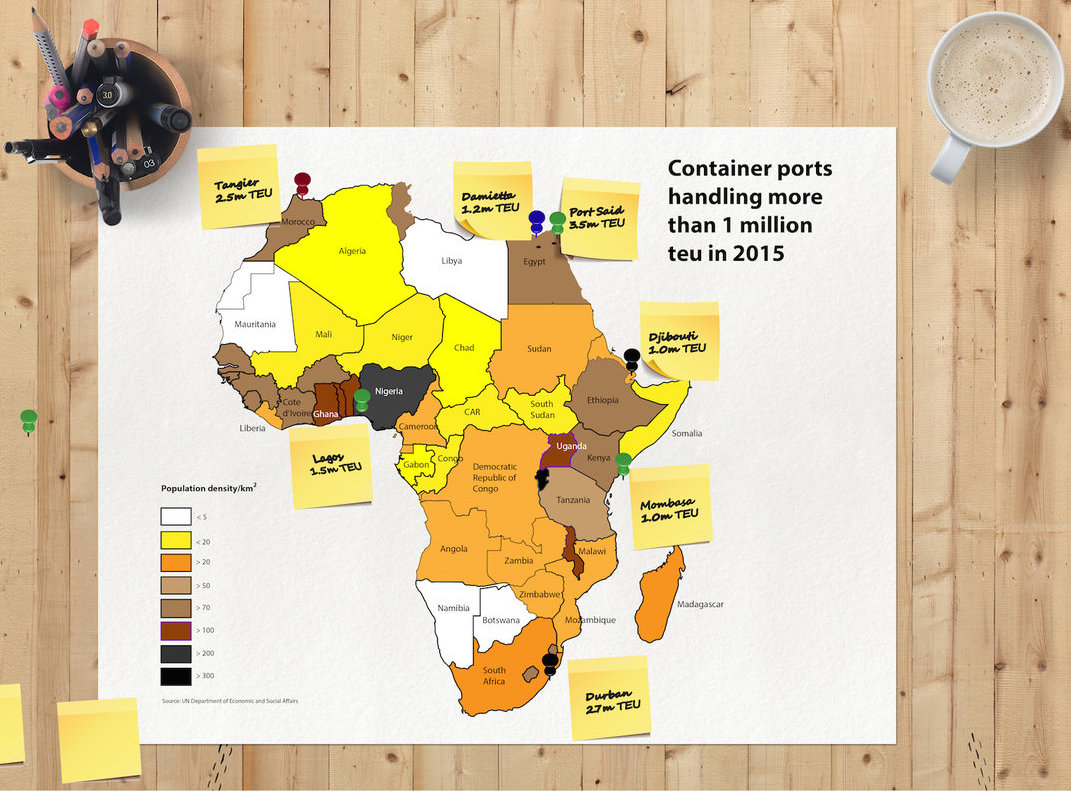
With its crippling deficiency in ports and overland transport infrastructure, Africa has been cut off from modern world trade.
But over the next five years, thanks to international investment, much of the continent will be fitted with state-of-the-art deepwater container terminals able to handle supersized box carriers, plus modern transport networks to distribute them.
In this special GCR report, we chart how Africa, through the concerted push for the “million-teu port”, is steering toward the path of economic take-off, similar to east Asia’s post-war development.
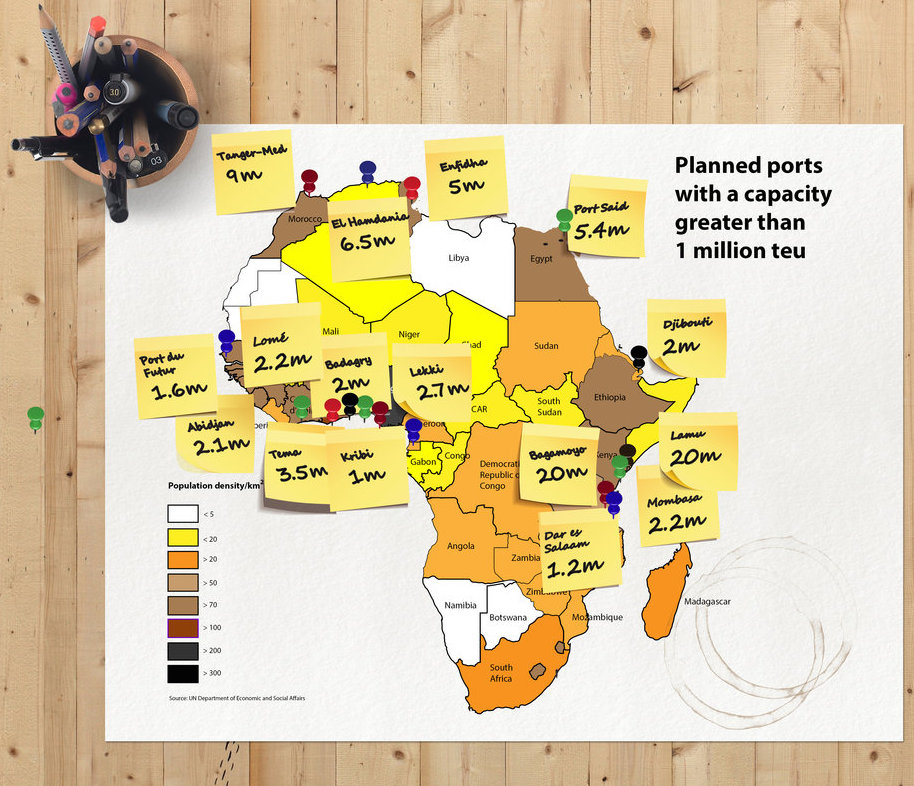
How Africa’s ports are about to be transformed
The story that dominated the African construction sector at the end of 2016 was the commissioning of a standard-gauge electric rail line between Addis Ababa and Djibouti. This 750km line, built at a cost of $4bn, has given landlocked Ethiopia a much-needed outlet to the Indian Ocean. The previous link, a railway completed by the French in 1917, fell into dereliction in the 2000s. Its replacement is capable of moving freight at 120km/h (passengers travel at 160km/h), all the way to the microstate of Djibouti. The project “glows with the radiance of a prospectively multi-beneficial enterprise”, as a journalist writing for the African Exponent website described it. Â
On the other hand, Ethiopia had not really suffered from being cut off from global markets, because it has had almost nothing to take to them: in 2007, its largest trading partner was Germany, to which it exported $51m of goods, principally coffee beans. Most of the internal economy was taken up with subsistence farming.
By 2015 that picture had been utterly transformed. The country’s total exports increased eightfold in value, to just under $6bn, and China was its dominant partner, buying $275m of them and supplying $4.7bn of its imports. So, the lion’s share of the freight that the new line will carry will be boxes filled with Chinese manufactured goods, arriving at the Chinese-built container terminal of Doraleh and travelling east to west. It was not surprising, then, that the actors who financed and built the railroad were three Chinese banks and two Chinese contractors, all of them controlled and co-ordinated by the Chinese government.
The chances are good that, in another eight years, this picture will change again. Despite severe political difficulties with sections of its own population, Ethiopia has become the demonstration project for African economic take-off: as well as the railway, some of the continent’s most ambitious power schemes are being constructed, of which the best known is the Grand Ethiopian Renaissance Dam, which was paid for largely with indigenous capital. Once that is complete, other electrified railways will follow, and the basis will be laid for the growth of manufactured goods to replace coffee, oil seeds, gold and cut flowers as the country’s main foreign currency earners.
And this shift is the real point of the Djibouti railway: at the moment 100% of containers arrive in African ports full and 80% leave empty. If Ethiopia is to achieve middle-income status by mid-century, as the World Bank optimistically predicts, then the contribution of manufacturing will have to rise from the 10% level, where it is now, to the 30% that China has achieved, and those manufactured goods will have to find markets around the world. The same applies to all African countries who have set their sights on economic development. For that to happen, something will have to be done about Africa’s ports.
Â
The inactive continent
Africa’s port sector is grossly deficient in both quantity and quality of harbours, quays, cranage, storage systems and hinterland transport. How deficient? Although China and Africa have similar populations (respectively, 1.4 billion and 1.2 billion), in 2015 the five largest Chinese ports moved more than 118 million twenty-foot-equivalent units (teu), whereas Africa’s top five moved less than 10 million. According to Lloyd’s List, the entire continent accounts for just 3% of world container traffic.
This partly reflects the fact that much of the continent’s exports consist of primary commodities such as oil, gas, mineral ores and tropical agricultural produce that are moved on breakbulk cargo ships or tankers, but it also indicates just how little Africa participates in global trade. Throughout its history, as a supplier of involuntary manpower to the Americas from the 16th to 19th centuries, and as site for colonial plantations in the 19th and 20th centuries, Africa has always shown a net loss in its dealings with the rest of the world. Â
It is a remarkable fact that 90% of Africa’s total trade, including its internal variety, moves by sea. This is partly because it can’t move any other way: road networks within countries are often inadequate and, outside South Africa and the Maghreb, rail systems are “a losing game”, to quote a recent study by the African Development Bank. For example, Mombasa in Kenya is the largest port in east Africa, and last year succeeded for the first time in handling a million containers. However, the country’s main railway, completed by the British in 1901 (dubbed the “Lunatic Express”) has only enough capacity to move one in 20 of those boxes, so there is a continuous traffic jam of trucks trying to enter and leave the city.
Another factor is the inability of most of the continent’s ports to deal with container ships built after the 1970s. Any vessel that carries more than 3,000 containers – that is, a Panamax or greater – requires a draft of more than 12m, meaning they’d get stuck some distance from the wharf in most African ports.
Then there is the question of whether ships are “geared”, meaning whether they carry their own cranes to load and unload their boxes. Pretty much all modern container ships are gearless – cranes take up too much space and require too much maintenance. However, most African ports require ships to do their own lifting. The result is that, with the exception of the modern terminals such as those at Durban, Tanger Med, Doraleh and Port Said, Africa’s manufactured goods are moved by slow, old “feeders” hauling around 1,200 boxes – the containerised equivalent of a tramp steamer.
As well as the difficulty of physically moving containers into and out of ports, there is the additional problem of getting them through customs and agreeing what import duty is to be paid – a process of unpredictable length, in which time is always on the port authorities’ side.
This means that the average length of time between bringing a container to a port by ship and dispatching it into the hinterland by road or rail is much longer in African ports than elsewhere. A World Bank paper from 2012 noted that, that, with the exception of Durban, dwell times average about 20 days in African ports, compared with three to four days in most other international ports. This average conceals the extreme variability of the statistics. For example, figures for the Cameroonian port of Douala in 2009 show that 19% of containers were dealt with in fewer than six days, but more than 12% took between 20 and 30 days, and a further 12% took between one and three months to be processed. This is a serious matter under any circumstances, but when those containers are filled with goods required for, say, a construction project, the consequential costs are painful to contemplate.
Enter the dragon
The good news for Africa is that this crippling deficiency is beginning to be tackled. China’s demand for oil and minerals, as well as its superabundance of capital for external investment, had led to a surge in economic activity in the east and west of the continent, particularly Nigeria, the Great Lake states and the Ethiopian highlands. To see how pervasive the influence of China has been over the past 10 years, consider the growth in the number of African countries who have China as their primary economic partner. Alongside trade, there has been a large number of other construction and civil engineering projects, as well as a transfer of Chinese managerial skill, capital, commercial networks, and often sizeable – and controversial – immigration flows.
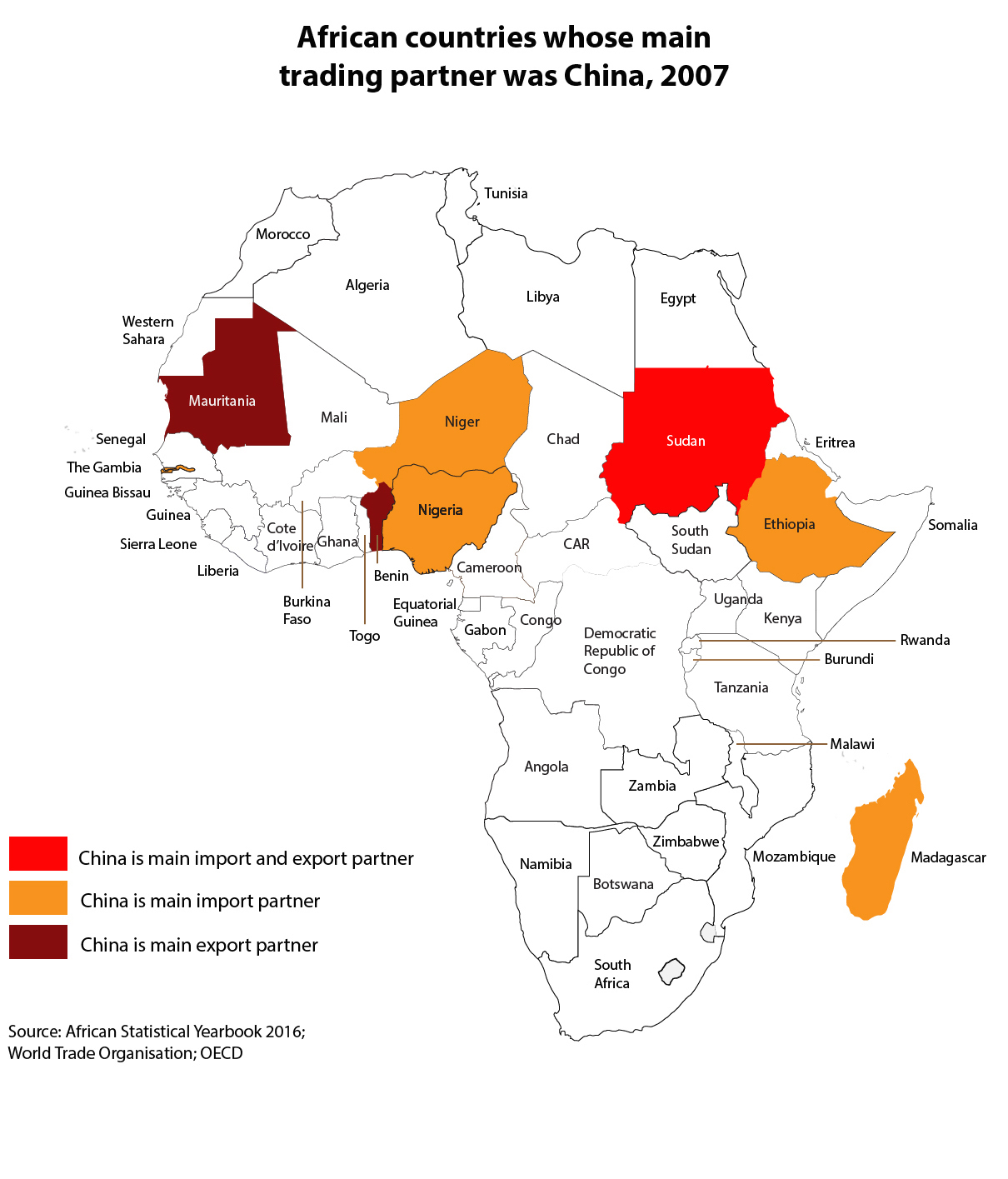
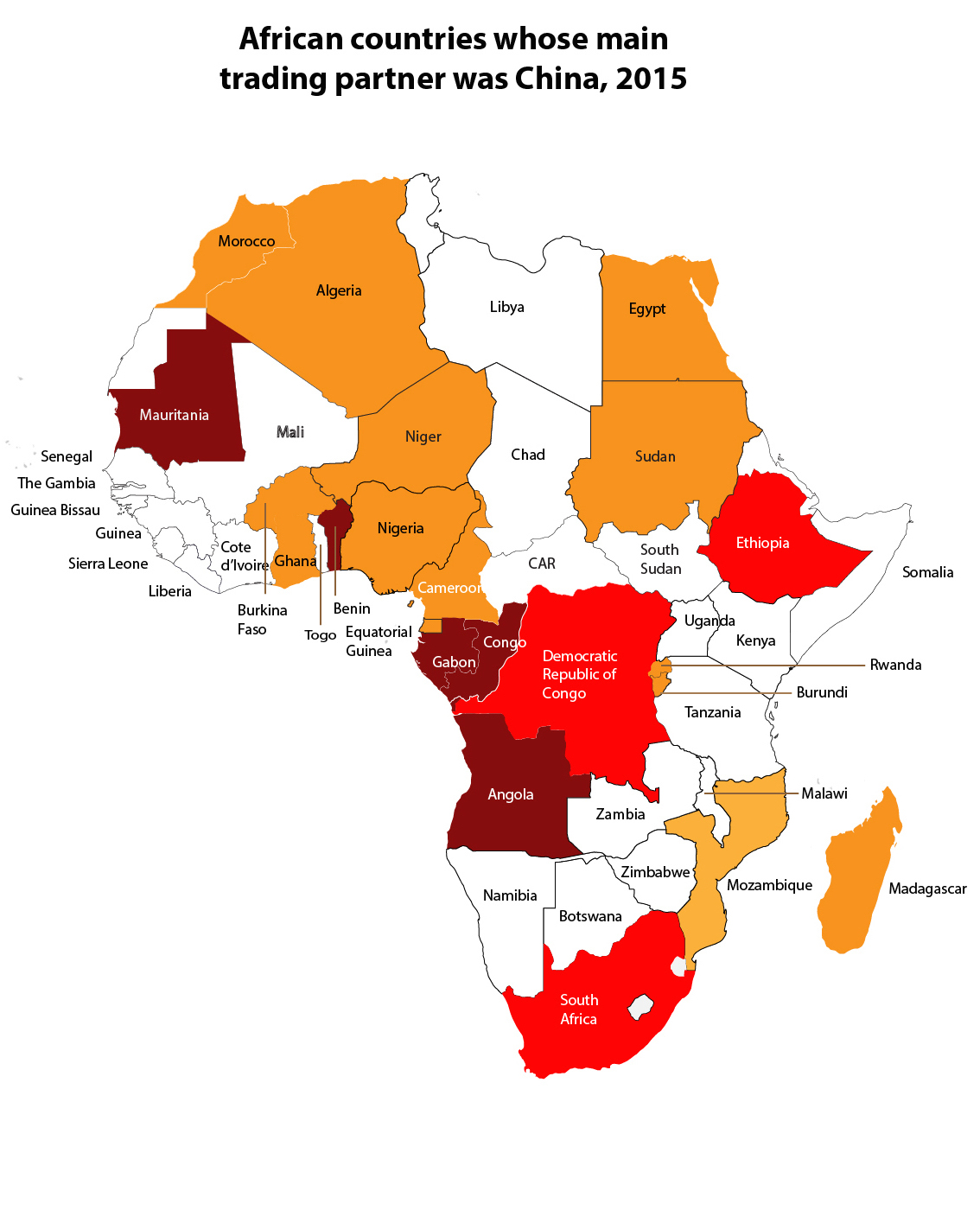
China’s economic ties with Africa
This has led to an equivalent surge in port construction projects. Over the next five years, much of sub-Saharan Africa is going to be fitted with state-of-the-art deepwater container terminals that are able to handle supersized box carriers, as well as modern transport networks to distribute them. Alongside the ports, there will be tax-free special economic zones to stimulate foreign investment in manufacturing, and the chance to follow the post-war path of east Asia towards economic take-off.
In the coming weeks, this GCR special report analyses the rise of the “million-teu port” on all Africa’s coasts, and looks at the chances of an infrastructure-led transformation in Africa’s prospects.
We start with West Africa.
West Coast to welcome the world
Top image: Tanger-Med soon to be Africa’s biggest port (APMT)
Comments
Comments are closed.






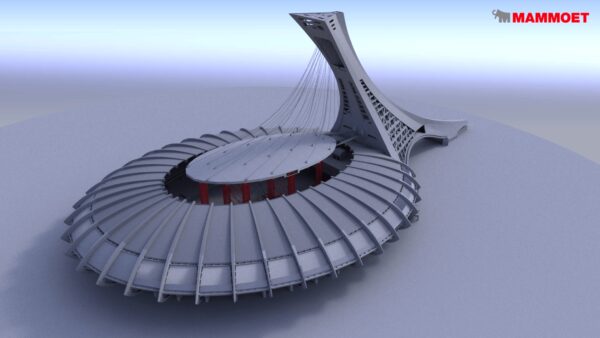
What on Earth are our bankers, investment funders and entrepreneurs doing, sat on their derrieres whilst the golden opportunities that this Continent has in abundance are being rapidly grabbed by China.
We are missing this boat, big-style.
This article revels the wider trade balance say Ethiopia and China (order of $4.5bln vs. $0.275bln). An insight to policy makers.